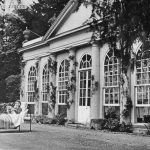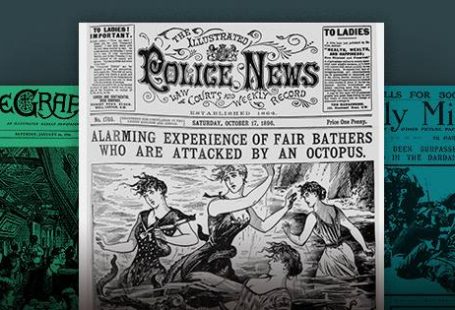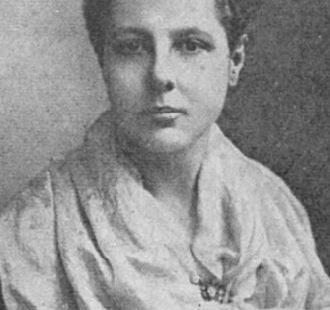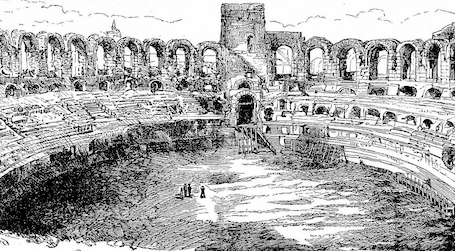Over eighty years since the first children were evacuated from cities across Britain, and as part of our history of childhood month here at The Archive, in this special blog we will take a look at how country houses were requisitioned by schools and their evacuated children.
Want to learn more? Register now and explore the Archive
The grandest of stately homes were not exempt from requisition, with some of the country’s largest and most famous houses, including Blenheim Palace, Chatsworth and Castle Howard, taken over for the purpose of housing evacuated schools. Using contemporary accounts in the British Newspaper Archive, we will delve into the difficulties and the benefits that schools faced once removed to these grand surrounds.
Upon the outbreak of war in September 1939, boys’ public school Malvern College was evacuated to Blenheim Palace, the ancestral home of the Dukes of Marlborough and the birthplace of Winston Churchill. An October article in the Birmingham Daily Post outlines the complications of this move:
It is difficult for anyone who has not had a first-hand experience of an undertaking of this kind to realise the immense amount of work which has been necessary and the great cost which has been incurred in providing sufficient accommodation for the school to exist at all.
 Illustrated London News | 4 November 1939
Illustrated London News | 4 November 1939
Finding suitable classroom accommodation proved to be a ‘grave difficulty,’ with some lessons being taught in the laundry. Blenheim Palace’s state rooms, as well as the Long Library, were converted into dormitories for the boys, who were not allowed to use ink for fear of damage to the valuable tapestries and paintings still adorning the rooms.
 Illustrated London News | 4 November 1939
Illustrated London News | 4 November 1939
Thankfully, the ‘splendid spirit of the co-operation shown by both staff and boys’ meant that the ‘efficiencies and traditions of Malvern College’ were preserved. Indeed, with such a magnificent home as Blenheim, the boys were allowed some perks, the ‘kindness of the owner, the Duke of Marlborough,’ allowing the boys to use the grounds for playing fields and the ornamental ponds for bathing.
 Illustrated London News | 4 November 1939
Illustrated London News | 4 November 1939
Malvern College’s stay at Blenheim Palace was not to be a long one, as in September 1940 the stately home was taken over by M15.
A recurring feature in society publication The Tatler – Country Houses in Wartime – provides a rather idyllic description of the evacuation of the junior section of Wimbledon High School for Girls to Hanford House, Dorset. The atmosphere at the Elizabethan house is described as a ‘particularly happy one.’ And although the school itself decided to discontinue its junior section, the owners, Lieutenant-Colonel and Mrs Lister, at the request of the children’s parents, decided to carry on the school themselves.
Elsewhere, evacuated schools provided vital help in times of emergency. Queen Margaret’s School, Scarborough, was evacuated to the historic Castle Howard in North Yorkshire. Disaster struck when a fire broke out in the east side of the castle, destroying some priceless paintings. However, the girls from Queen Margaret’s sprang into action and helped to save ‘many valuable objects in the fire,’ using a pony and trap, and blankets and sheets.
 Yorkshire Posts and Leeds Intelligencer | 11 November 1940
Yorkshire Posts and Leeds Intelligencer | 11 November 1940
And after the war, the interrelation between schools and stately homes continued to reap positive effects, both for those who found their education within their walls, and for the houses themselves. Wentworth Woodhouse, the largest privately owned house in the United Kingdom, suffered greatly during the war due to open-cast mining, which destroyed much of its grounds. The Ministry of Health had attempted to requisition it during this time, and high maintenance costs meant that it had become something of a white elephant.
 Open-cast mining at Wentworth Woodhouse | The Sphere | 20 April 1946
Open-cast mining at Wentworth Woodhouse | The Sphere | 20 April 1946
However, according to the Yorkshire Post and Leeds Intelligencer, in 1950 Wentworth Woodhouse had ‘found a new life after years of military occupation.’ Under a new government education scheme, the mansion had become ‘England’s first publicly owned college of physical training for girls.’
Its first students are described as ‘quickly settling down in the high-domed rooms with their great open fireplaces and delicately worked ceiling and wall decorations.’ Common rooms were set up the ‘magnificent State dining room and in the Van Dyck room, with its ornamental ceiling and cut-glass chandelier.’
Indeed, there is a sense that new life was being breathed into the old house, that some kind of poignant transaction between past and present was taking place:
Soon the old panelled corridors will grow accustomed to the liveliness of students dressed in grey shorts, and scarlet cloaks; the empty library shelves will hold technical volumes; and the old ballroom will echo to the music of a modern waltz. For at Wentworth Woodhouse the past and the present are one.
Discover more about how country houses were requisitioned for a myriad of other purposes during the Second World War, including hospitals, maternity homes and war-supply depots here, and learn more about the history of childhood by browsing our other blogs here.








